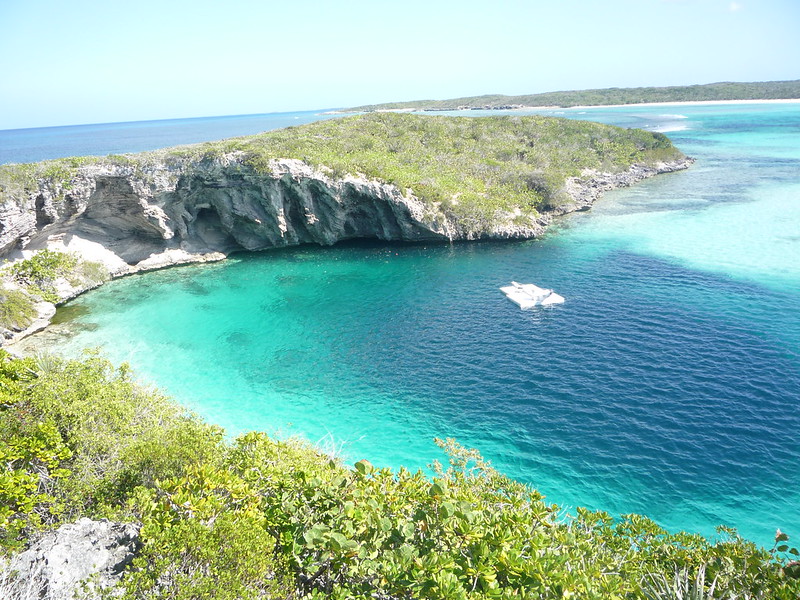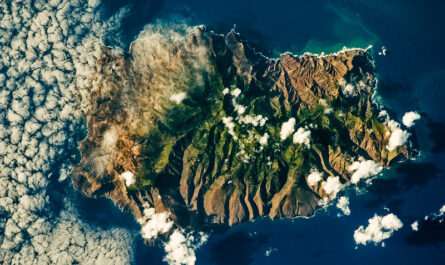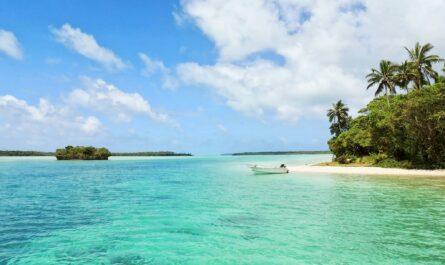The Bahamas is renowned for its pristine beaches, turquoise waters, and vibrant marine ecosystems. Beneath its idyllic surface lies a hidden world of intrigue and mystery: the blue holes. These underwater caves and sinkholes are among the most enigmatic and fascinating natural formations on Earth. With their rich history, unique ecosystems, and scientific importance, the blue holes of the Bahamas have captivated explorers, scientists, and adventurers alike.
This comprehensive article dives into the geology, biology, exploration history, and cultural significance of the Bahamas’ blue holes, shedding light on these underwater marvels.
What Are Blue Holes?
Blue holes are underwater sinkholes or caves that extend vertically and horizontally beneath the ocean floor. Their name derives from their striking blue appearance, created by the depth of the water and the way sunlight interacts with the surface.
1. Geological Formation
- Limestone Erosion: Blue holes form when limestone bedrock is dissolved by slightly acidic rainwater or groundwater over thousands of years, creating a network of caves.
- Collapse and Submersion: Over time, sections of these caves collapse, forming vertical sinkholes. Rising sea levels then submerge these formations, creating blue holes.
- Unique Characteristics: They are often connected to extensive underwater cave systems, some of which span miles.
2. Locations in the Bahamas
The Bahamas is home to more than 200 blue holes, with some of the most famous including:
- Dean’s Blue Hole: The deepest blue hole in the world, located near Long Island.
- Stargate Blue Hole: Known for its striking circular shape and unique marine life.
- Andros Blue Holes: Found on Andros Island, these holes are part of the world’s largest underwater cave system.
The Science of Blue Holes
1. Hydrology
Blue holes contain a mix of saltwater and freshwater, often creating a stratified environment with distinct layers:
- Halocline: The layer where freshwater and saltwater meet, marked by dramatic changes in salinity.
- Anoxic Zones: Lower layers lack oxygen, creating unique conditions for microbial life.
2. Biodiversity
Blue holes host a range of marine species adapted to their unusual environments:
- Fish and Invertebrates: Species such as the remipede, a primitive crustacean, are found only in blue holes.
- Microbial Life: Bacteria thrive in anoxic zones, playing a role in nutrient cycling and cave formation.
- Corals and Sponges: Despite the challenging conditions, some blue holes support vibrant coral and sponge communities.
3. Scientific Importance
Blue holes serve as natural laboratories for studying:
- Climate History: Sediments in blue holes contain records of ancient climates, including information on hurricanes and sea-level changes.
- Extremophiles: Organisms adapted to extreme conditions provide insights into evolution and potential extraterrestrial life.
Exploring the Depths: The Adventurers and Scientists
1. History of Exploration
- Local Knowledge: Indigenous peoples, including the Lucayans, were aware of blue holes and incorporated them into their myths and survival practices.
- Modern Exploration: In the 20th century, pioneers like Jacques Cousteau brought global attention to blue holes through documentaries and expeditions.
2. Scientific Expeditions
Modern exploration of blue holes combines advanced technology and human ingenuity:
- Cave Diving: Requires highly trained divers equipped with specialized gear to navigate the dark, narrow passages.
- Submersibles and ROVs: Remotely operated vehicles provide access to areas too dangerous or inaccessible for humans.
- Research Findings: Expeditions have uncovered new species, fossilized remains, and ancient artifacts.
3. Notable Explorations
- Dean’s Blue Hole: Divers have reached depths exceeding 200 meters, uncovering unique geological and biological features.
- Andros Blue Holes: Studies here have revealed some of the most extensive underwater cave systems in the world, along with species found nowhere else.
The Mysteries of Blue Holes
1. Fossil Discoveries
Blue holes are time capsules, preserving ancient fossils and artifacts in their oxygen-deprived depths:
- Human Remains: Skeletons of Lucayan peoples provide insights into the lives of the Bahamas’ earliest inhabitants.
- Extinct Species: Fossils of animals like giant tortoises and crocodiles have been discovered.
2. Geological Anomalies
- Circular Geometry: Many blue holes exhibit near-perfect circular shapes, sparking theories about their formation.
- Unknown Depths: Some blue holes remain unexplored due to their extreme depth and complexity.
3. Legends and Myths
Local folklore adds an air of mystery to blue holes:
- Spirits and Monsters: Some tales describe blue holes as homes to supernatural creatures.
- Sacred Sites: Many blue holes were considered sacred by indigenous cultures, believed to be portals to the underworld.
Cultural and Ecological Significance
1. Cultural Importance
Blue holes have played a role in the identity of the Bahamas:
- Mythology: Stories passed through generations often attribute spiritual significance to these formations.
- Tourism: Blue holes attract divers, snorkelers, and nature enthusiasts, contributing to the local economy.
2. Ecological Role
Blue holes support unique ecosystems that influence the broader marine environment:
- Biodiversity Hotspots: They provide habitats for rare and endemic species.
- Nutrient Cycling: Bacteria in blue holes play a crucial role in recycling nutrients, supporting marine life beyond their confines.
Challenges and Conservation Efforts
1. Threats to Blue Holes
- Human Impact: Pollution, overfishing, and tourism can degrade these fragile ecosystems.
- Climate Change: Rising sea levels and warming oceans threaten the delicate balance within blue holes.
2. Conservation Initiatives
- Protected Areas: Efforts are underway to designate blue holes as marine protected areas.
- Sustainable Tourism: Guidelines for divers and visitors aim to minimize environmental impact.
- Research Support: International collaborations fund studies to better understand and protect blue holes.
Future Directions
1. Technological Advancements
Emerging technologies will enhance exploration and conservation:
- Advanced Diving Equipment: New technologies will allow divers to safely reach greater depths.
- AI and Robotics: Artificial intelligence and underwater drones will improve mapping and monitoring.
2. Global Collaboration
International efforts are needed to safeguard blue holes:
- Shared Knowledge: Data sharing among scientists will accelerate discoveries.
- Funding and Advocacy: Global organizations can provide resources and raise awareness.
3. Educational Outreach
Public engagement will play a key role in blue hole conservation:
- Documentaries and Media: Highlighting the beauty and importance of blue holes will inspire action.
- Local Involvement: Empowering Bahamian communities to lead conservation efforts ensures sustainable outcomes.
Conclusion
The blue holes of the Bahamas are more than geological curiosities; they are windows into Earth’s history, havens for unique life forms, and treasures of cultural significance. As we continue to explore and understand these underwater wonders, we must also prioritize their preservation. Through science, technology, and global cooperation, we can ensure that the blue holes remain a source of fascination and discovery for generations to come.



